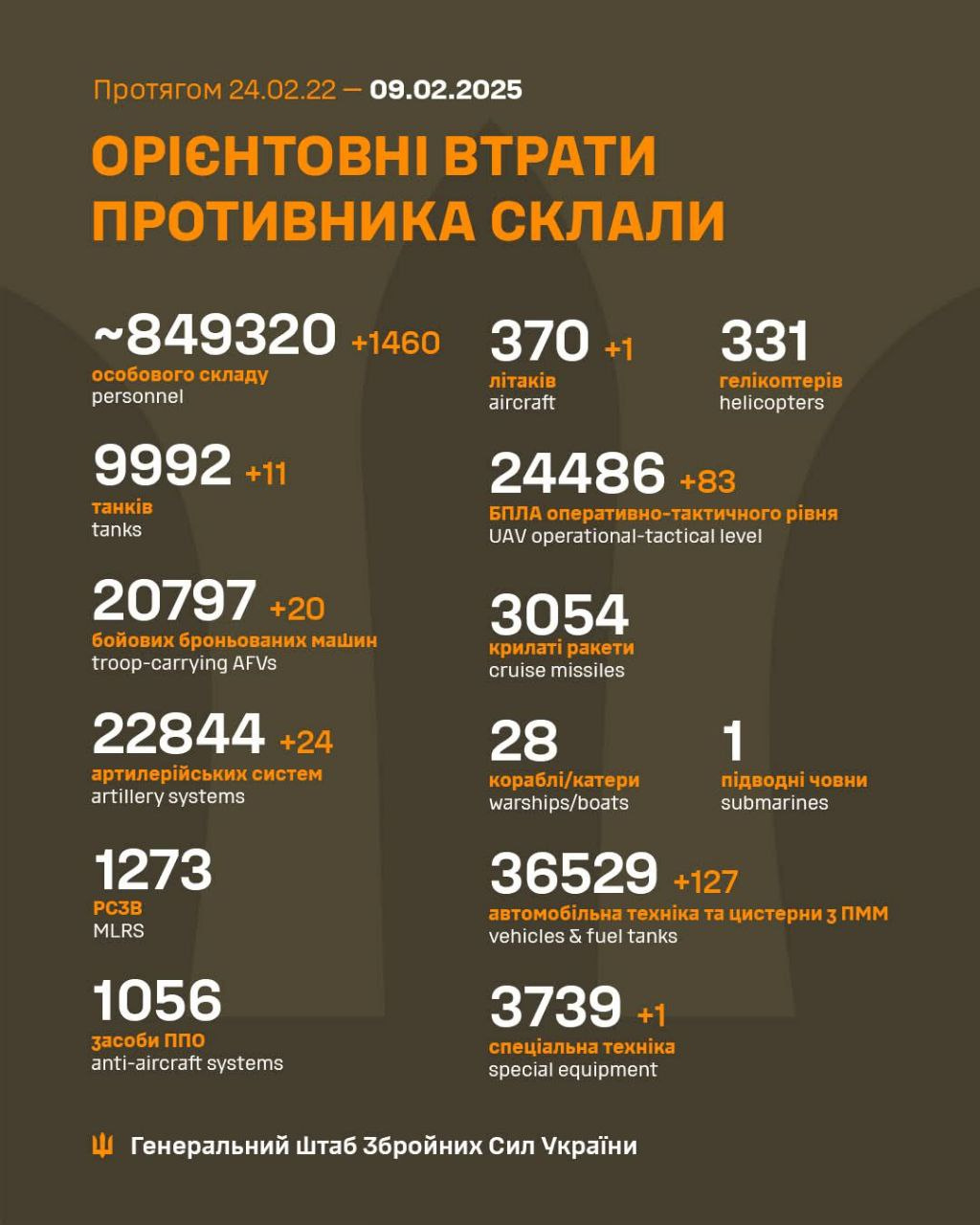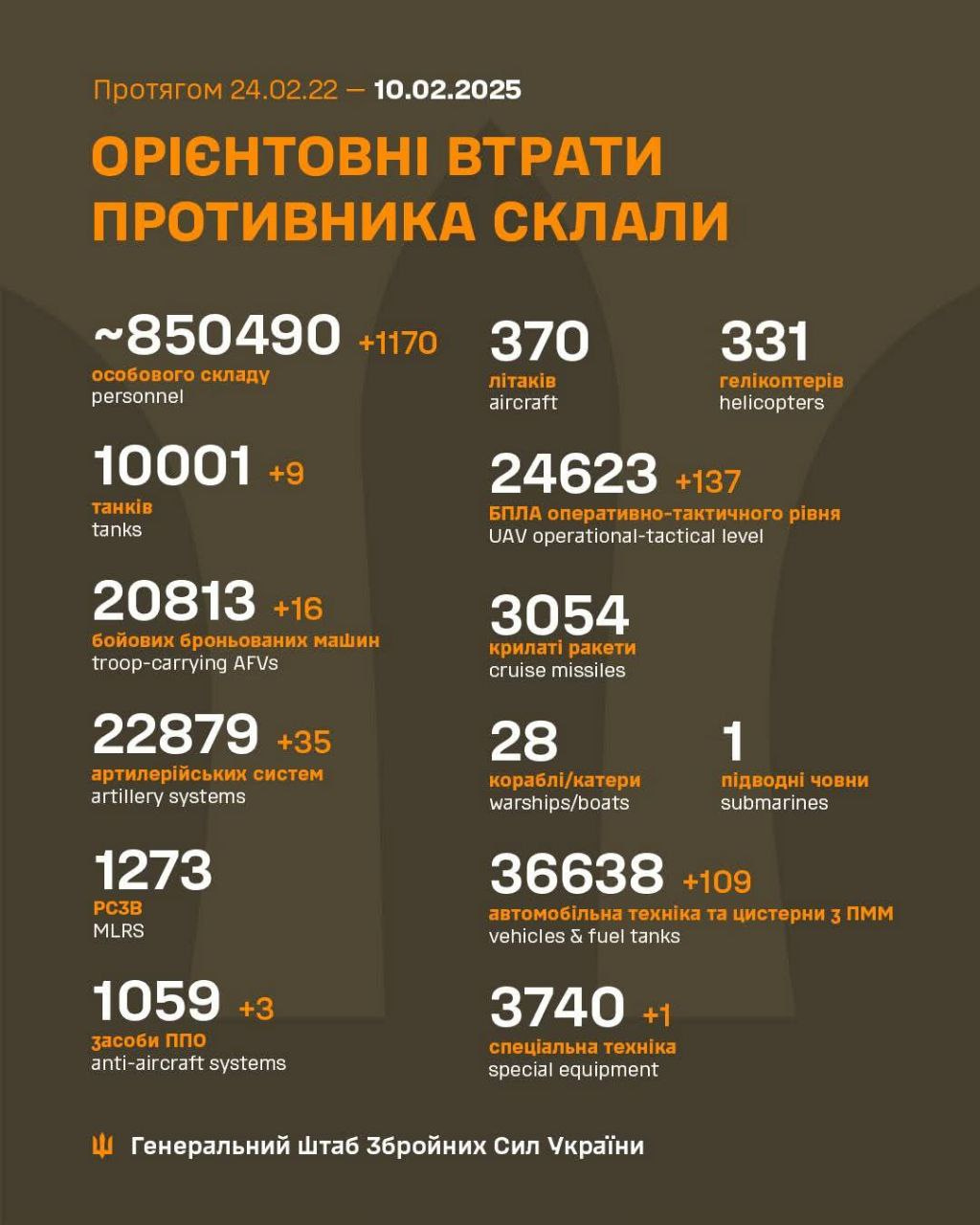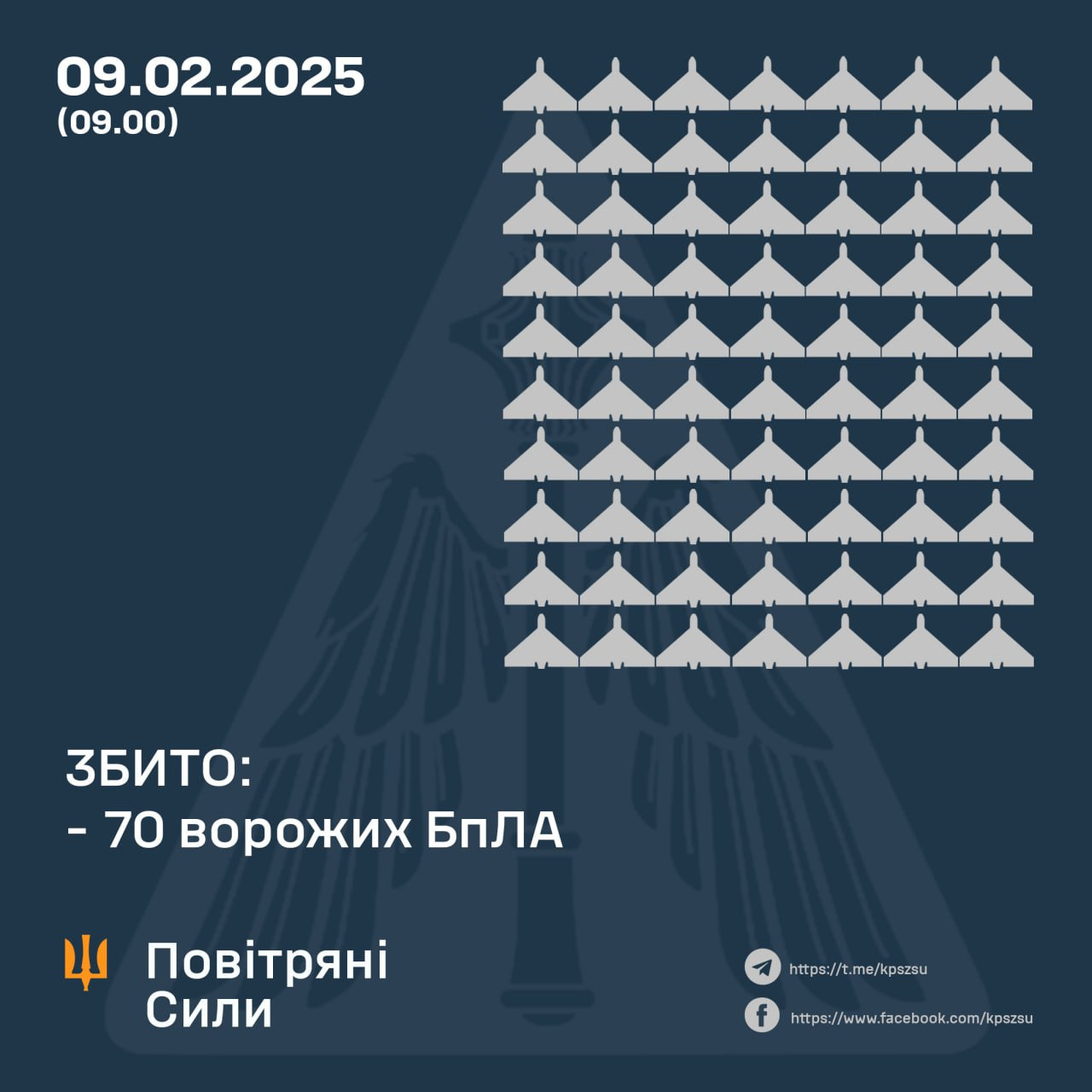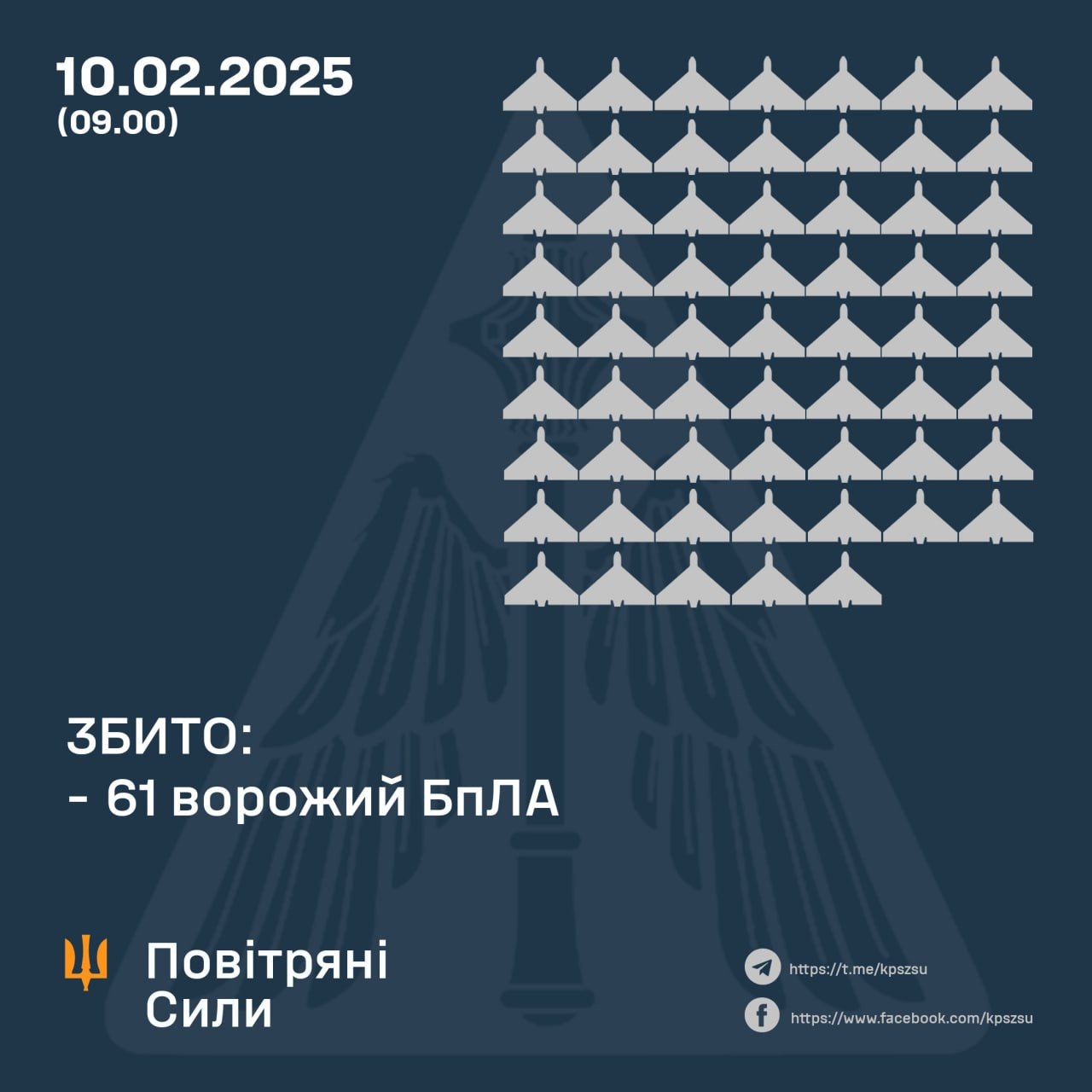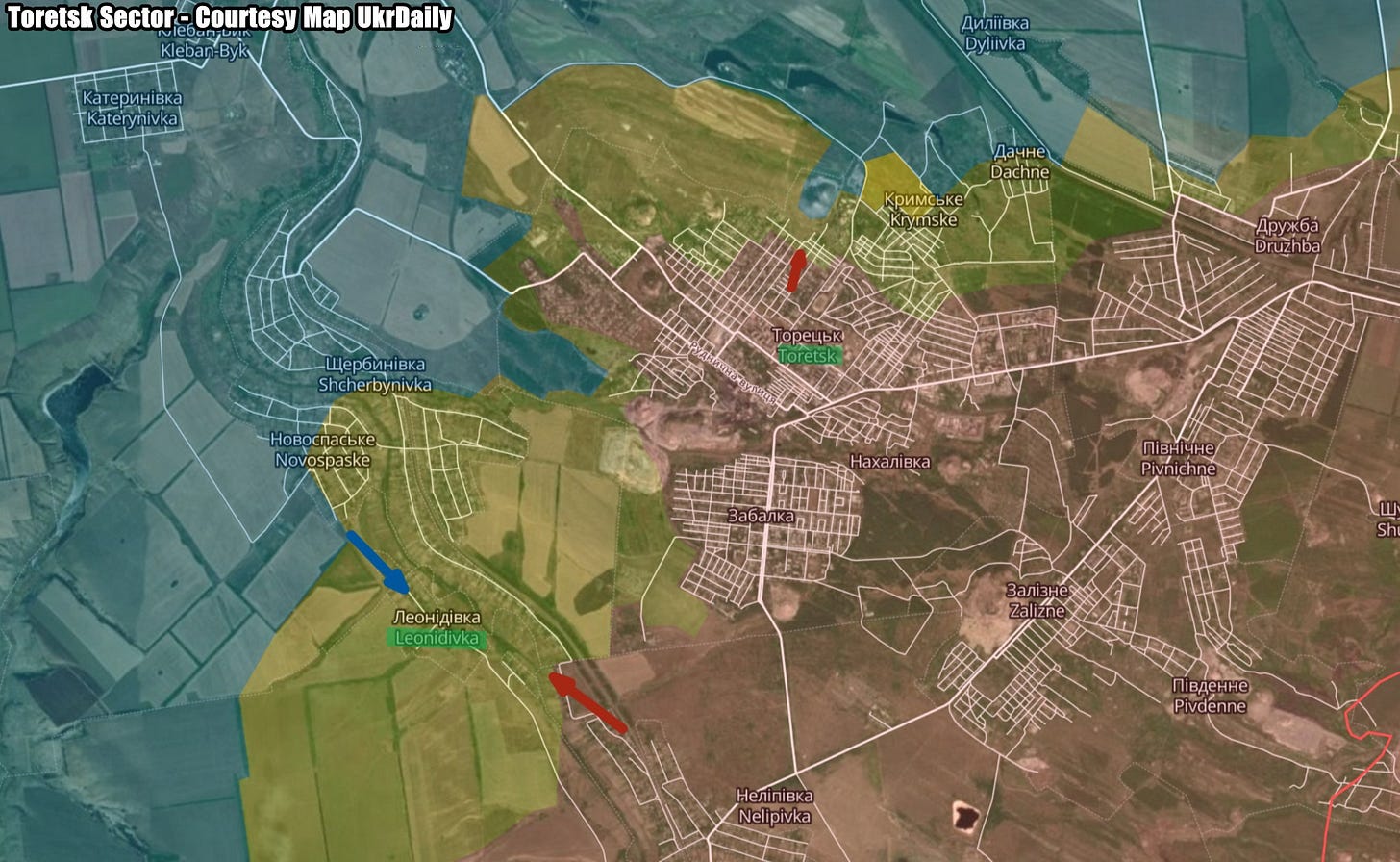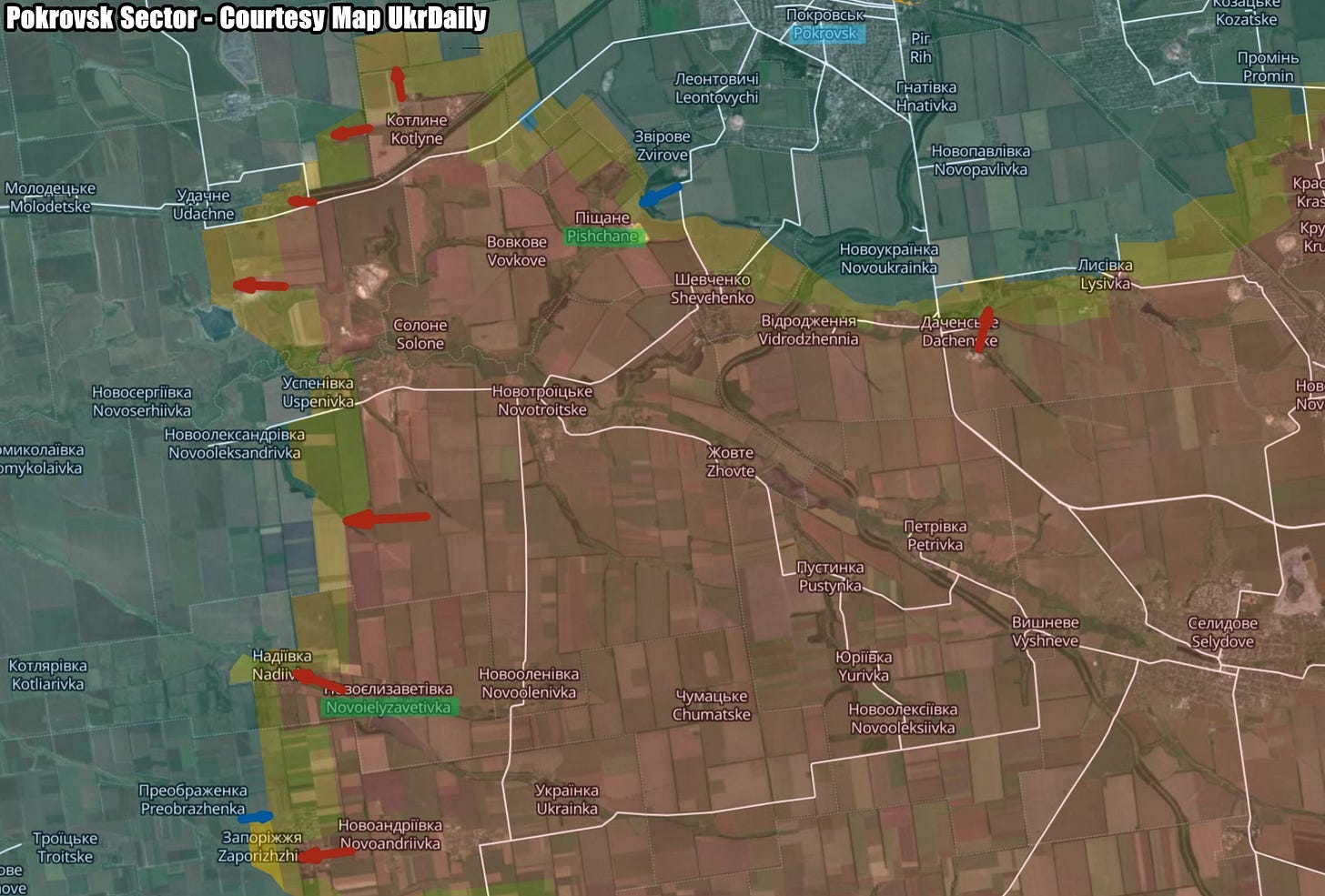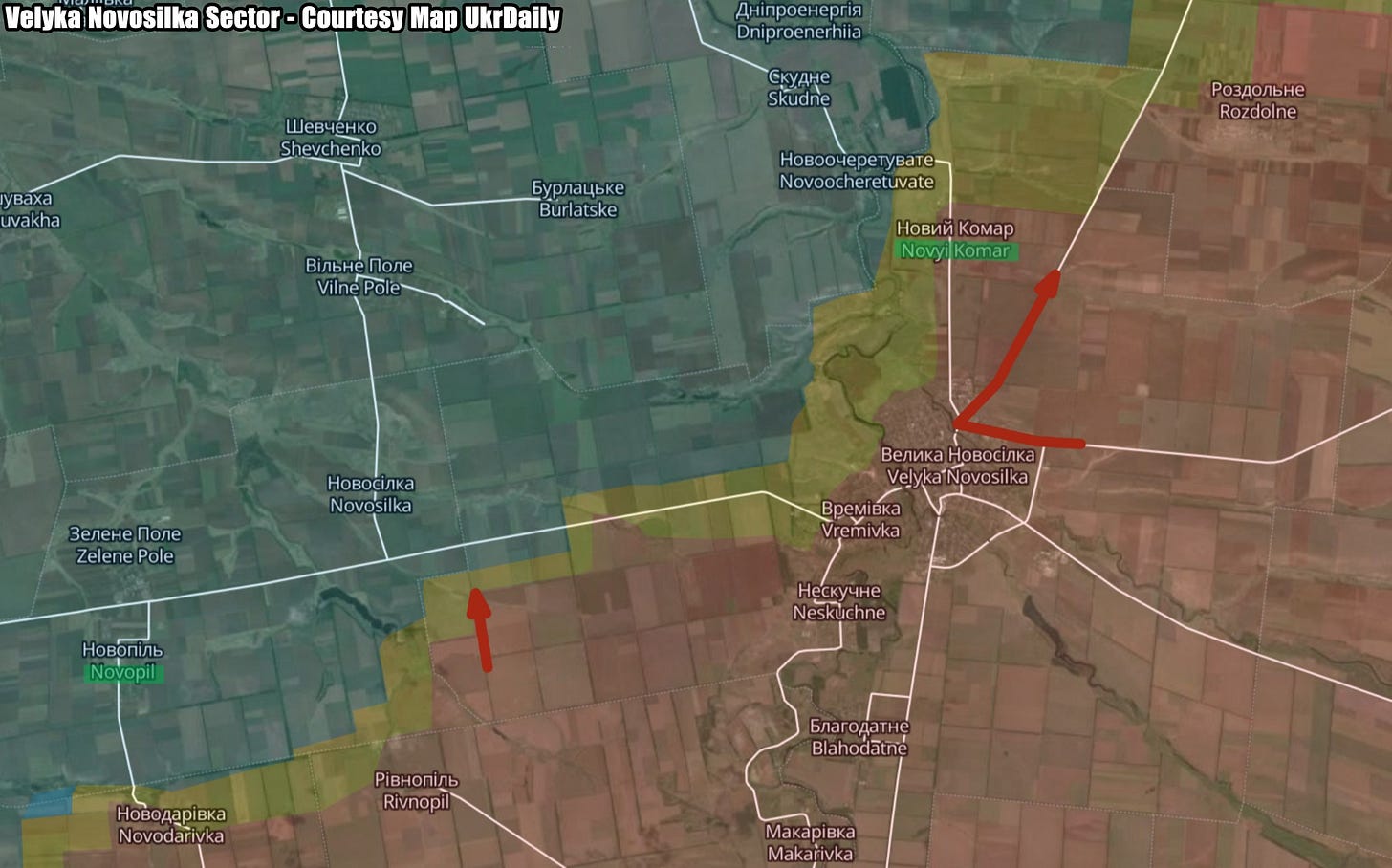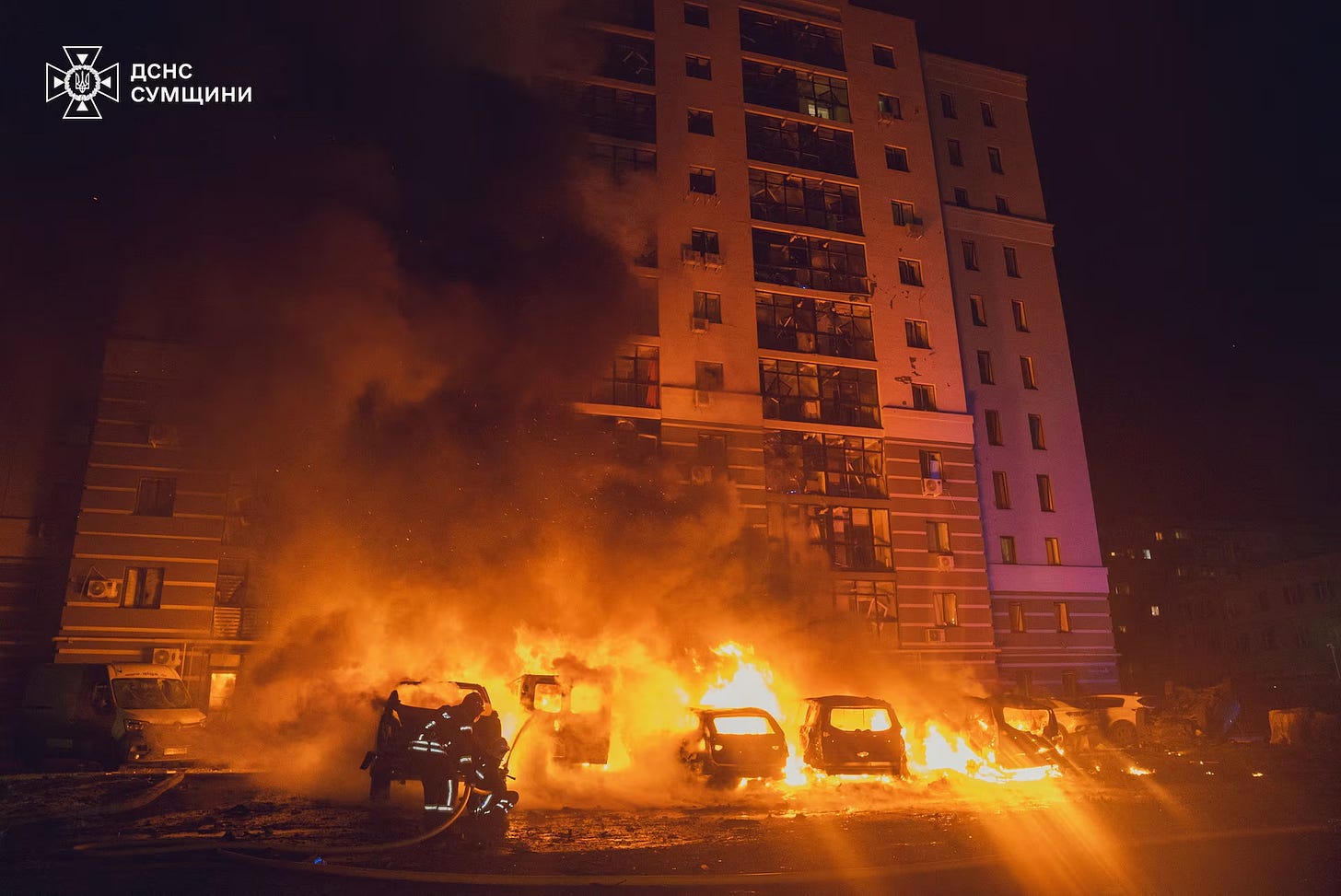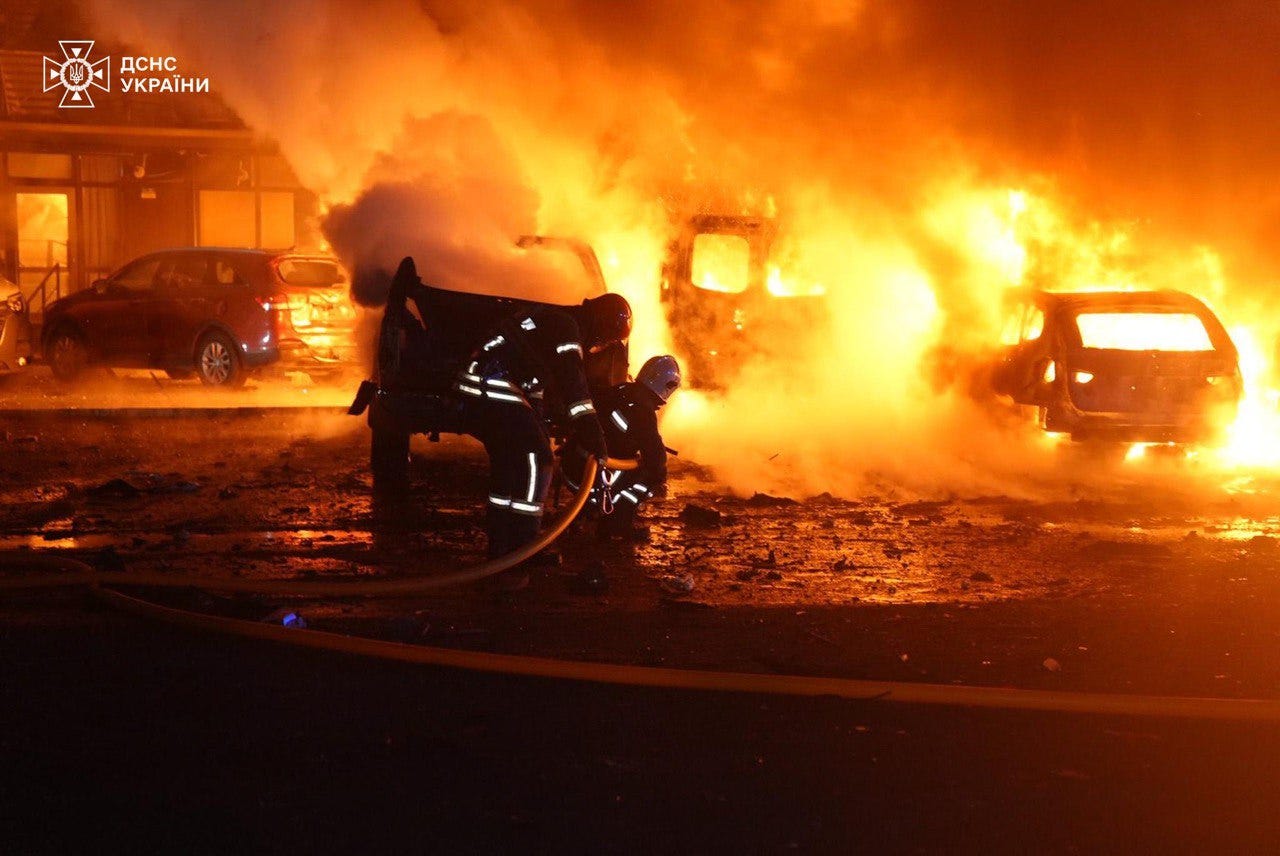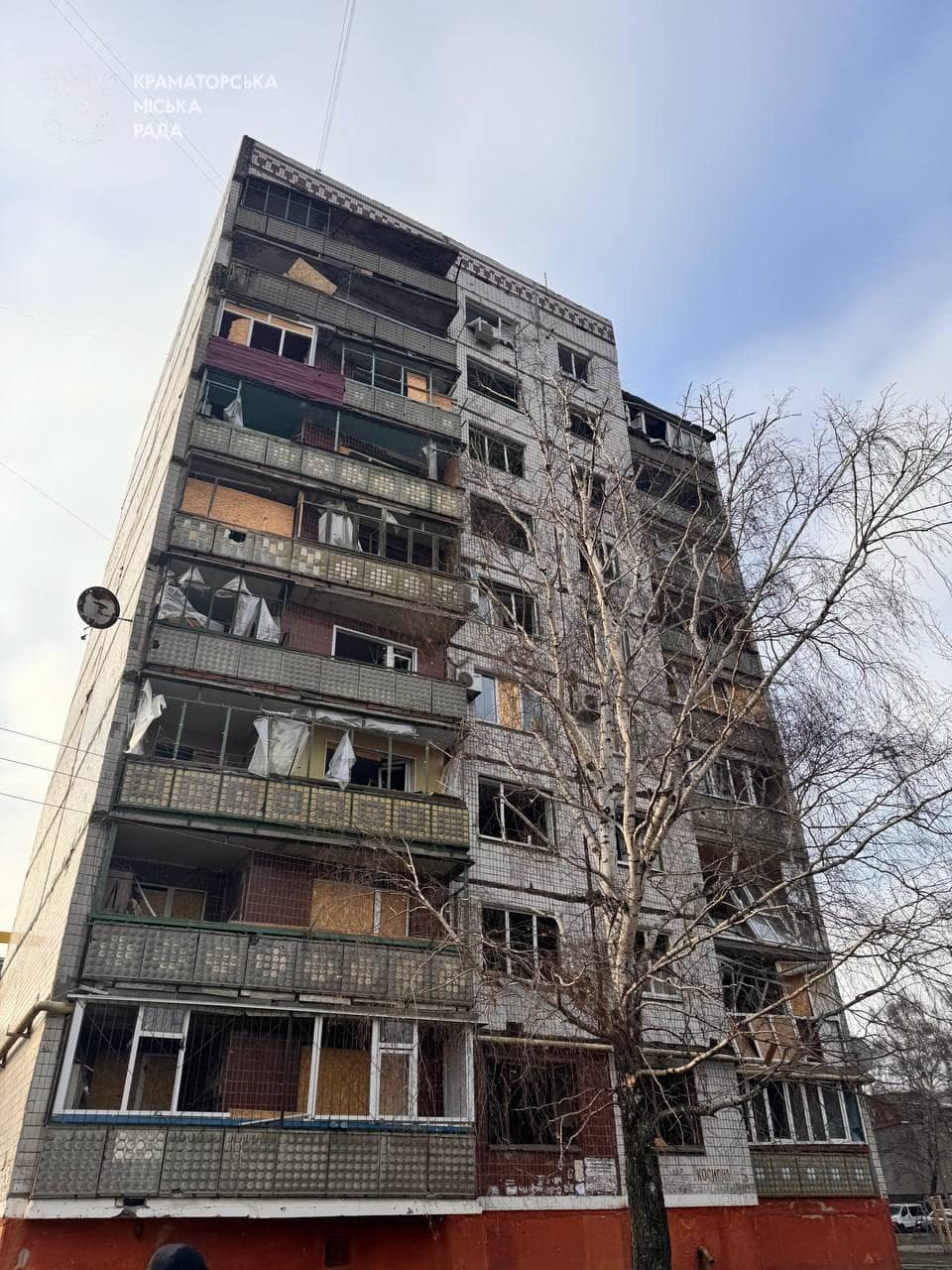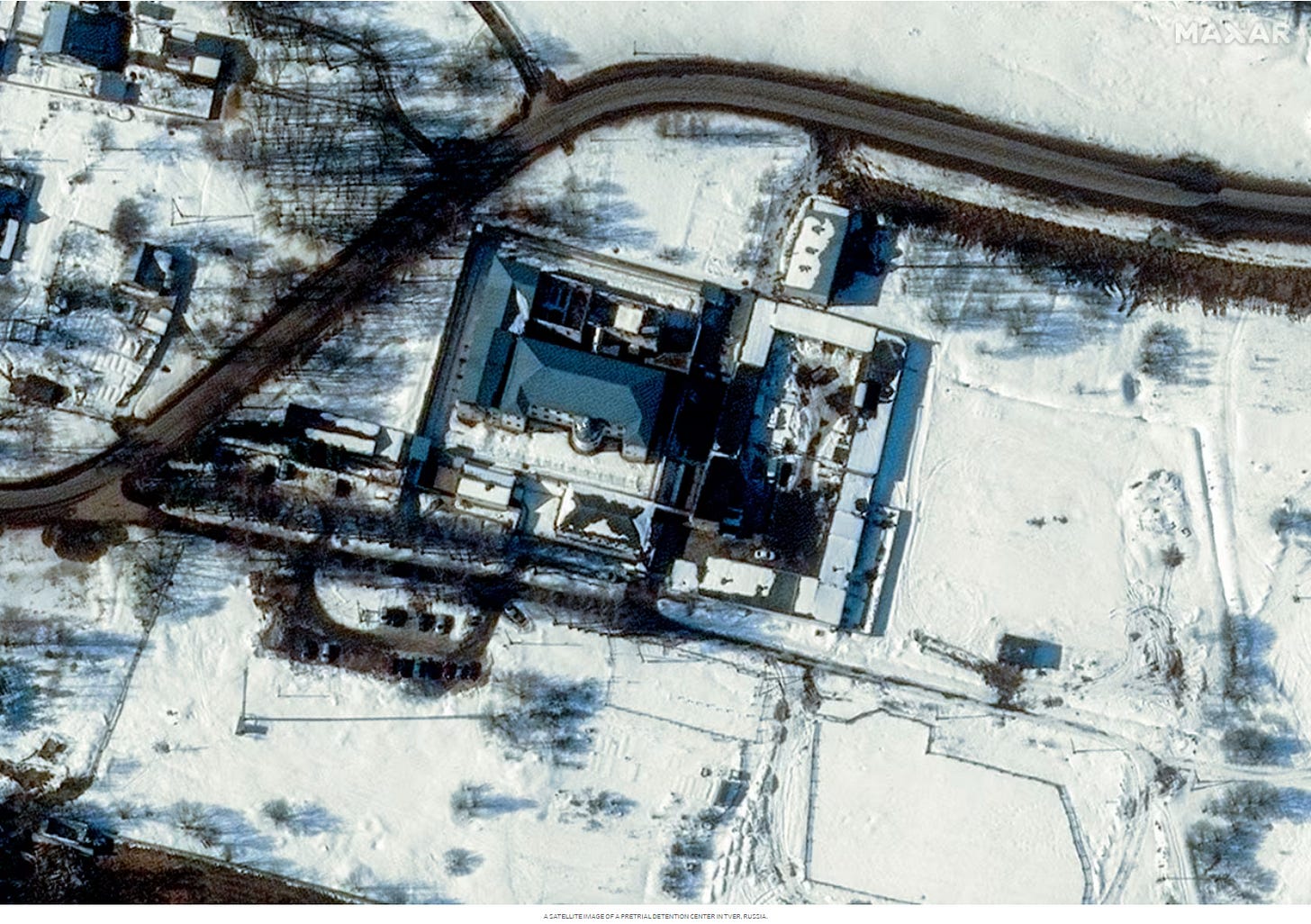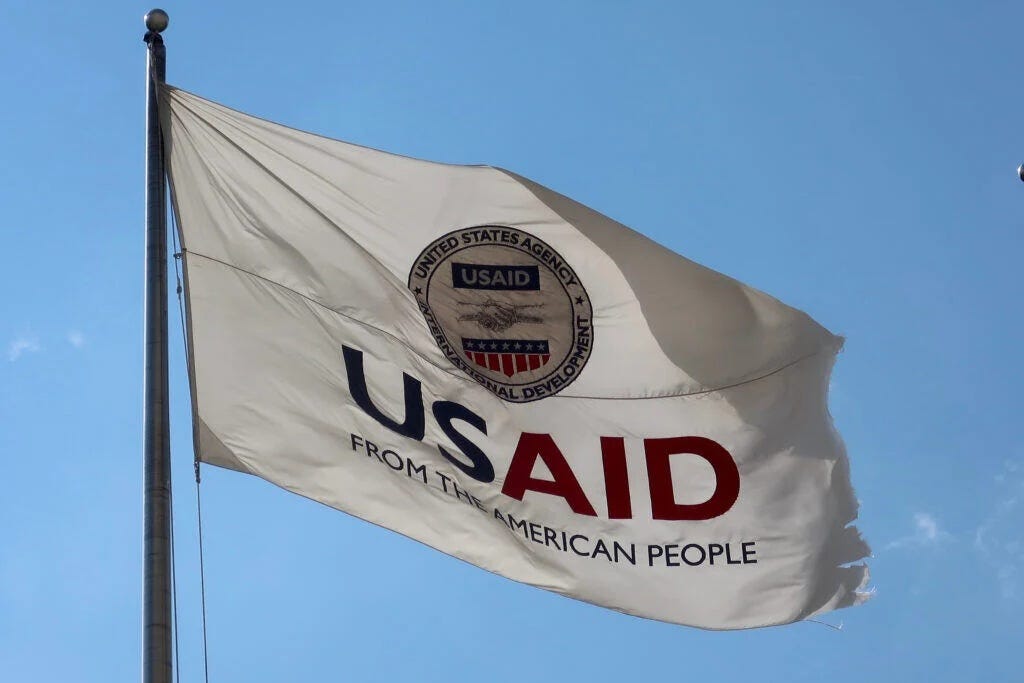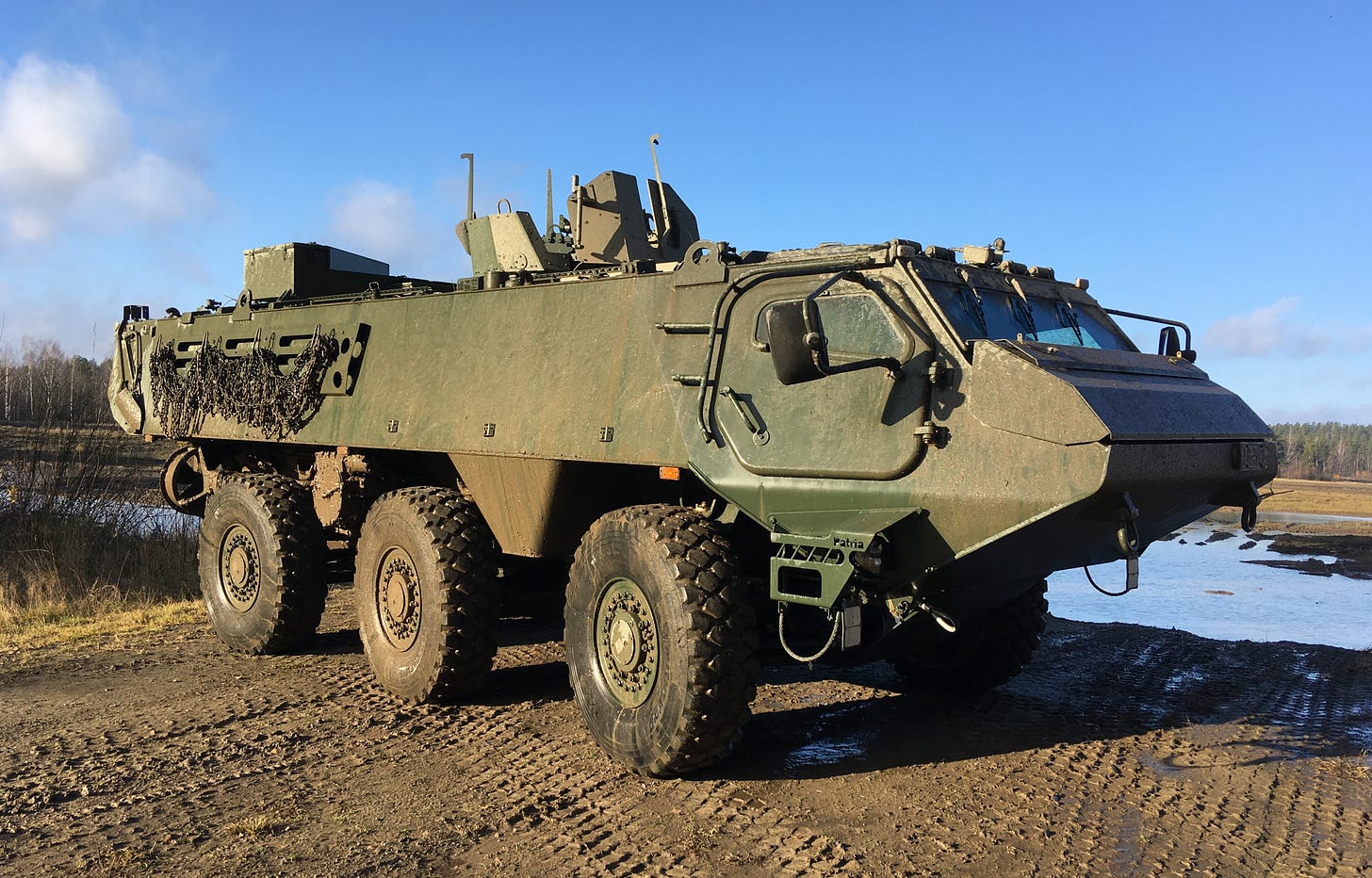Slava Ukraini! In early 2022 I began a Telegram channel aggregating news from a number of sources daily on the war in Ukraine. In June 2023 I began providing a daily draft for the Ukraine War Brief Podcast collecting news from over 70 sources daily, which formed the basis of the script. While the Podcast no longer exists I have continued to make this Brief available for my followers here on Substack for those who wish to keep up with the news from the war.
All the latest news on the Russo-Ukraine War 6 days per week
ALONG THE CONTACT LINE
GSAFU Morning Report
The General Staff of the Armed Forces of Ukraine in its Operational Information update at 08:00 on Feb 10 stated that day 1082 of the full-scale invasion of the Russian Federation against Ukraine had begun.
The situation on the line of combat remains tense in some sectors. Ukrainian defenders continue to actively counteract the Russian aggressor, causing them significant losses in personnel, equipment and technology. Exhausting the enemy along the entire front line and continuing to disrupt the plans of Russian occupiers to advance deeper into the territory of Ukraine.
During the past two days, 232 combat engagements took place.
Over the past 48 hours, the enemy carried out 2 missile strikes, 178 air strikes, used 5,280 drones and fired approximately 11,600 artillery shells across the positions of Ukrainian forces and civilians.
Air Force Daily Report
70 ENEMY UAVS WERE SHOT DOWN, 74 DRONES FAILED TO REACH THEIR TARGETS (LOCATIONALLY LOST)
➖➖➖➖➖➖➖➖➖
On the night of February 9, 2025 (from 7:30 p.m. on February 8), the enemy attacked with the 151st Shahed attack UAV and simulator drones of various types from the directions: Kursk, Orel, Millerovo, Bryansk, Primorsko-Akhtarsk - Russia.
The air attack was repelled by aviation, anti-aircraft missile troops, electronic warfare units, and mobile fire groups of the Air Force and Defense Forces of Ukraine.
As of 09:00, it has been confirmed that 70 Shahed attack UAVs and drones of other types have been shot down in Kyiv, Kharkiv, Poltava, Sumy, Cherkasy, Chernihiv, Kirovohrad, Vinnytsia, Zhytomyr, Rivne, Volyn, Mykolaiv, Kherson and Odessa regions.
74 enemy drones-simulators — lost in location (without negative consequences). Two UAVs — in the air, combat operations continue!
As a result of the enemy attack, the Kyiv, Sumy, Dnipropetrovsk, Kharkiv, Zhytomyr, and Volyn regions suffered.
61 ENEMY UAVS SHOT DOWN, 22 DRONES FAILED TO REACH THEIR TARGETS (LOCATIONALLY LOST)
➖➖➖➖➖➖➖➖➖
On the night of February 10, 2025 (from 9:00 p.m. on February 9), the enemy attacked with 83 Shahed attack UAVs and simulator drones of various types from the directions: Kursk, Orel, Millerovo, Shatalovo, Bryansk, Primorsko-Akhtarsk - Russia.
The air attack was repelled by aviation, anti-aircraft missile troops, electronic warfare units, and mobile fire groups of the Air Force and Defense Forces of Ukraine.
As of 09:00, the shooting down of the 61st Shahed attack UAV and drones of other types in Kyiv, Kharkiv, Poltava, Sumy, Chernihiv, Kirovohrad, Khmelnytskyi, Dnipropetrovsk, Zaporizhia, Mykolaiv, and Kherson regions has been confirmed.
22 enemy drone simulators were lost in location (without negative consequences).
As a result of the enemy attack, the Sumy, Kharkiv, Poltava, and Kirovohrad regions suffered.
Combat Operations in the Kursk Sector, Russian Federation
The Institute for the Study of War (ISW), a US based think tank, in its Feb 9 Russian Offensive Campaign Assessment reported that Ukrainian forces recently advanced southeast of Sudzha amid continued fighting in Kursk Oblast on Feb 9. Russian sources claimed that Ukrainian forces conducted mechanized attacks southeast of Sudzha near Russkaya Konopelka and Fanaseyevka. Russian sources also claimed that Russian forces counterattacked northwest of Sudzha near Sverdlikovo and Nikolskyi, north of Sudzha near Malaya Loknya, and southeast of Sudzha near Cherkasskaya Konopelka.
Geolocated footage published on Feb 9 indicates that Ukrainian forces recently advanced along the 38K-028 Sudzha-Oboyan highway southwest of Russkaya Konopelka.
The Khortytsia operational-strategic group
(Responsible for the northeastern part of Ukraine. )
Kharkiv Sector: Ukrainian forces recently advanced near Vovchansk amid continued Russian offensive operations in the area on Feb 9. Russian forces attacked near Vovchansk (north of Kharkiv City) on Feb 8 and 9.
Geolocated footage published on February 8 indicates that Ukrainian forces recently advanced in the Vovchansk Aggregate Plant in central Vovchansk.
Toretsk Sector: Russian forces recently advanced in the Toretsk direction amid continued offensive operations in the area on Feb 9. Russian forces conducted offensive operations near Toretsk itself, east of Toretsk near Krymske, and west of Toretsk near Shcherbynivka on Feb 8 and 9.
Geolocated footage published on February 8 indicates that Russian forces advanced along Klymenka Street in northern Leonidivka (west of Toretsk).
Ukraine's Khortytsia Group of Forces stated that Russian forces are using civilian passenger cars during assaults in the Toretsk direction due to a shortage of armored vehicles.
The Institute for the Study of War (ISW), a US based think tank, in its Feb 8 Russian Offensive Campaign Assessment reported that Russian command may be redeploying forces from the Kurakhove direction towards Toretsk in order to facilitate Russian offensive operations against Kostyantynivka in Spring or Summer 2025. A Russian source claimed that the Russian military command is redeploying elements of the 102nd and 103rd motorized rifle regiments, 163rd Tank Regiment, and 381st Artillery Regiment (all of the 150th Motorized Rifle Division) and elements of the 96th regiment (possibly also part of the 150th Motorized Rifle Division, although ISW has not previously observed reports of this unit operating in Ukraine) from the Kurakhove direction to the Toretsk direction.ISW has not observed confirmation or other reporting on this alleged redeployment.
Another Russian source claimed that elements of the 102nd and 103rd motorized rifle regiments are operating near Dachne as of Feb 8 however. A redeployment of elements of the 8th CAA to the Toretsk direction- in conjunction with intensified Russian efforts in the Chasiv Yar direction in recent weeks- would indicate that the Russian command may intend to prioritize advances towards Kostyantynivka and pressuring Ukraine's fortress belt in 2025, as ISW previously assessed
The Tavria operational-strategic group
(Responsible for the central-eastern and southeastern part of Ukraine.)
Pokrovsk Sector : Russian forces recently advanced in the Pokrovsk direction amid continued offensive operations in the area on Feb 9. Russian forces conducted offensive operations near Pokrovsk itself; east of Pokrovsk near Yelyzavetivka, Promin, Novotoretske, Vodyane Druhe, Novooleksandrivka, Kalynove, and Zelene Pole; southeast of Pokrovsk near Lysivka; south of Pokrovsk near Shevchenko; and southwest of Pokrovsk near Kotlyne, Preobrazhenka, Pishchane, Nadiivka, Novoserhiivka, Sribne, Uspenivka, Zaporizhzhia, Novoandriivka, and Udachne on Feb 8 and 9.
Geolocated footage published on Feb 9 indicates that Ukrainian forces recently advanced near Mine No. 3 in southeastern Pishchane.
Geolocated footage published on Feb 9 indicates that Russian forces recently advanced west of Zvirove. The Ukrainian General Staff published a map on Feb 9 indicating that Russian forces recently advanced north of Novoyelyzavetivka (southwest of Pokrovsk) and within southeastern Malynivka (east of Pokrovsk)
Velyka Novosilka Sector: Russian forces recently advanced near Velyka Novosilka amid continued offensive operations in the area on Feb 9. Russian forces conducted offensive operations southwest of Velyka Novosilka near Novopil and north of Velyka Novosilka near Novyi Komar on Feb 8 and 9.
Geolocated footage published on Feb 7 indicates that Russian forces recently advanced northeast of Novyi Komar (north of Velyka Novosilka).
The Odesa operational-strategic group
(Responsible for Kherson, Qırım, (also known as Crimea) and the Black Sea.)
There have been no major changes to the combat environment since our last report.
TEMPORARILY OCCUPIED TERRITORIES
Nothing major to report.
THE HOME FRONT
Russia launches drone attacks on Kyiv, Sumy
Overnight Russian drone attacks sparked a fire in Kyiv and injured a woman and damaged several houses in the northeastern city of Sumy, Reuters reports citing Ukrainian officials on Monday.
The Ukrainian military said on Monday that it had shot down 61 out of 83 drones with 22 more likely downed by electronic warfare.
No injuries were reported in the attack that sparked a fire at a non-residential building in Kyiv, Mayor Vitali Klitschko said in a post on the Telegram messaging app.
But a 38-year-old woman was hospitalised after Russia launched drones at Sumy, which is the administrative centre of the broader Sumy region, Ihor Kalchenko, governor of the region said on Telegram.
Five houses were also damaged, he added.
The photos posted by the emergency services from the site showed cars engulfed in flames next to a high-rise building with damaged windows.
The emergency services said the attack knocked out more than 300 windows and prompted evacuation of 65 residents from the damaged homes. There was no comment from Russia.
Both sides deny targeting civilians in the full-scale invasion Russia launched in February 2022. But thousands of civilians have died in the conflict, the vast majority of them Ukrainian.
Russia launched FAB strike on Kramatorsk: 1 dead 12 wounded, over 50 high-rise buildings damaged.
On Feb 9 Russia struck Kramatorsk, Donetsk region, with FAB guided bombs resulting in one person dead and 12 wounded Censor.net reported citing the head of the Donetsk Regional Military Administration Vadym Filashkin from his telegram channel.
The bombing damaged 56 multi-storey buildings, 21 private houses, 6 administrative buildings, 2 infrastructure facilities, 9 trade outlets, 2 non-residential buildings and 2 cars.
"This strike is another clear proof that there are no safe places left in Donetsk Oblast. Even cities that are relatively far from the frontline are still at risk," the statement said.
RUSSIAN WORLD
Russian Prison Authorities Approved Widespread Brutality Against Ukrainian POWs
Russian prison authorities approved the use of brutality and torture against Ukrainian prisoners of war weeks after the Kremlin launched its invasion of Ukraine, The Wall Street Journal reported Monday.
Moscow planned and carried out “what United Nations investigators have described as widespread and systematic torture,” the WSJ reported, citing three former prison officials who have entered witness protection after giving testimony to International Criminal Court (ICC) investigators.
In March 2022, Igor Potapenko, the former head of the Federal Penitentiary Service (FSIN) in St. Petersburg and the Leningrad region, “delivered a direct message to an elite unit of guards” in charge of handling prisoners of war.
“Be cruel, don’t pity them,” Potapenko reportedly told the guards.
According to the WSJ, Potapenko said that normal rules wouldn’t apply to Ukrainian POWs and that guards would not be required to wear the body cameras that are mandatory in Russia’s prison system.
Similar orders were handed down in regions across the country
Russia has a long history of cruelty in its prison system, reaching back to the earliest decades of the Soviet Union, when Joseph Stalin created labor camps for those deemed dangerous to Soviet rule. In recent decades, Russia has taken some steps to improve conditions, such as separating first-time offenders from the rest of the prison population, and some regions have introduced body cameras for guards after years of campaigning by human-rights groups.
While dealing with Ukrainian prisoners of war, these “elite guards” were tasked with working with local prison guards to direct the POWs’ activities. They interpreted Potapenko’s instructions at that March 2022 meeting as a carte blanche for violence, said the two former guards. They pushed their mistreatment of Ukrainians to a new level with the belief that they had the permission of their leadership, said one of the former guards.
The violence served a purpose for the Russian authorities, according to the former guards and human-rights advocates: making them more malleable for interrogations and breaking their will to fight. Prison interrogations were sometimes aimed at extracting confessions of war crimes or gaining operational intelligence from prisoners who had little will to resist after they suffered extreme brutality.
One former penitentiary system employee, who worked with a team of medics in Voronezh region in southwestern Russia, said prison guards beat Ukrainians until their police batons broke. He said a boiler room was littered with broken batons and the officers tested other materials, including insulated hot-water pipes, for their ability to cause pain and damage.
INTERNATIONAL NEWS
Musk calls for shutting down US-funded outlets Radio Free Europe, Voice of America.
Tech billionaire Elon Musk on Feb. 9 called for shutting down U.S. funded media outlets Radio Free Europe and Voice of America. The Kyiv Independent reported.
Responding to comments by U.S. Special Presidential Envoy for Special Missions Richard Grenell, Musk wrote on X: "Yes, shut them down. Europe is free now (not counting stifling bureaucracy). Nobody listens to them anymore. It’s just radical left crazy people talking to themselves while torching $1B/year of US taxpayer money."
"Radio Free Europe and Voice of America are media outlets paid for by the American taxpayers. It is state-owned media. These outlets are filled with far left activists," Grenell reportedly said on Feb. 9. "I’ve worked with these reporters for decades. It’s a relic of the past. We don’t need government paid media outlets."
Both Elon Musk and Richard Grenell have voiced strong opposition to government funding of media organizations, arguing that taxpayer money should not be used to support these outlets.
Musk, as head of the Department of Government Efficiency (DOGE), has criticized federal payments to media organizations like Politico, the Associated Press, and The New York Times, deeming them inefficient uses of taxpayer funds and moving to eliminate them.
Similarly, Grenell, as Trump’s special mission envoy, has publicly condemned government spending on media subscriptions, echoing Musk's stance that such funding should be terminated immediately.
These calls come amid broader scrutiny and controversy surrounding government-funded media, with the Trump administration taking steps to halt subscriptions to outlets like Politico.
Europe considers seizing “Shadow Fleet” tankers carrying Russian oil through the Baltic Sea.
European countries are exploring a legal mechanism to tighten inspections and allow the confiscation of tankers transporting Russian oil through the Baltic Sea, citing their ongoing risk of environmental disaster and "accidental" damage to underwater infrastructure. Politico reports citing sources in government and diplomatic circles on this matter.
The proposals being considered include using international law to grab vessels on environmental or piracy grounds, said the officials, who were granted anonymity to discuss the private talks. Failing that, the countries could go it on their own, jointly imposing fresh national laws to seize more ships further out at sea.
“Close to 50 percent of sanctioned trade [in Russian seaborne oil] is going through the Gulf of Finland,” said Estonia’s Foreign Minister Margus Tsahkna. “There are the environmental threats, there are the attacks we’ve had against our undersea infrastructure.”
Still, the new plans won’t easily be translated into action. According to experts and maritime lawyers, difficulties include legal retaliation from Russia, steep financial costs and onerous logistics. It will also mean navigating labyrinthine global shipping laws.
“We have to coordinate, we have to agree how we implement these conventions,” Tsahkna said.
“The shadow fleet is now transporting over 80 percent of all Russian crude oil,” said Isaac Levi, the Russia-Europe lead at the Centre for Research on Energy and Clean Air think tank.
The Baltic Sea is the critical artery for that illegal trade, he argued. The vessels are typically loaded with Russian oil at ports like Ust Luga near St. Petersburg before winding their way through the Gulf of Finland and across the Baltic Sea to the world’s oceans via the North Sea.
German military investigates unidentified drones flying over German military bases where Ukrainians train.
Germany's Bundeswehr is investigating potential espionage after unidentified drones were spotted six times in January flying over a sensitive German military base where Ukrainians have been training, Der Spiegel reported on Feb. 9.
Germany failed to force the drones to land or to locate their pilots despite the use of special jamming devices, the Der Spiegel report said.
The Schwesing base is located in the North Sea and has been used to train both Germans and Ukrainians on the Patriot air defense system. These advanced weapons systems have played a crucial role in defending Ukraine's skies from missile and drone attacks, which have drastically increased over the past several months.
The Bundeswehr believes Russia is the top suspect behind the drone flights, said Der Spiegel, referencing an internal report on the matter.
Incidents of drones believed to be spying on German bases where Ukrainians train have been reported for over a year.
In December, Germany charged three German-Russian citizens with espionage on behalf of Moscow, after the suspects were said to have photographed and explored potential targets in Germany for sabotage.
U.S. funding freeze threatens Ukraine investigations of alleged Russian war crimes.
The Trump administration's freeze of foreign funding has begun impacting an international effort to hold Russia responsible for alleged war crimes in Ukraine, according to eight sources and a Ukrainian document seen by Reuters, halting dozens of jobs and tens of millions of dollars in aid. Reuters reports.
Ukraine has opened more than 140,000 war crime cases since Moscow's February 2022 invasion, which has killed tens of thousands, ravaged vast swathes of the country and left behind mental and physical scars from occupation. Russia consistently denies war crimes have been committed by its forces in the conflict.
U.S.-funded international initiatives such as the Atrocity Crimes Advisory Group for Ukraine (ACA) have provided expertise and oversight to Ukrainian authorities. Kyiv has been praised by its Western partners for probing alleged crimes while the war is still raging.
At stake are six U.S.-funded projects at the Prosecutor General's Office (PGO) valued at $89 million, according to a Ukrainian document on the U.S. funding and cuts seen by Reuters.
Funding for at least five of those projects has already been frozen, according to five sources directly involved, who cited interruptions in payments. The affected worked on issues ranging from the preservation of evidence from the battlefield to anti-corruption initiatives and reform of Ukraine's prosecution system.
Two of the listed projects were funded by USAID, three by the Bureau of International Narcotics and Law Enforcement and one directly by the Department of State, the document showed.
Since the first weeks of Russia's invasion, Ukraine's international partners have made accountability for alleged Russian crimes a key part of their support for the war-torn country.
Yevhen Krapyvin of the Centre for Policy and Legal Reform in Kyiv said U.S. support, particularly from USAID, had been vital earlier in the war.
The freeze has also impacted the planned launch of an American-funded case management system that is part of a broader effort to help modernise Ukraine's judiciary, said Leonid Sapelnikov, deputy head of Ukraine’s State Judicial Administration, in charge of digitisation.
Cleaning up and strengthening the judicial system is central to Kyiv's bid to join the European Union.
"If the (case management) system works, we expect that the effectiveness of the judiciary will increase and it will be possible to hear more cases," Sapelnikov said, adding that Ukraine would seek alternative sources of funding for the project, without giving details.
MILITARY & TECH
Latvia has ordered Patria armored personnel carriers for Ukraine.
Latvia has ordered Patria 6x6 armored personnel carriers to be delivered to Ukraine in 2025, Ukrainska Pravda reports citing the press service of the Latvian Ministry of Defense
As noted, Latvia has ordered Patria 6x6 armored personnel carriers. The number of armored vehicles has not yet been disclosed, but it is expected that they will be handed over to the Ukrainian military this year.
"These armored vehicles, manufactured in Latvia will be delivered to the defenders of Ukraine this year. We not only support Ukraine in its fight against the occupiers, but also test the use and durability of armored vehicles in real combat conditions, which will provide valuable lessons for the national armed forces," said Latvian Defense Minister Andris Spruds.
He added that this order will not affect the fulfillment of already concluded contracts for the Latvian army, which guarantees the security of the country's national defense readiness.
That’s it for today’s Brief folks if you would like to keep up with events in Ukraine daily please consider subscribing, it’s free!







